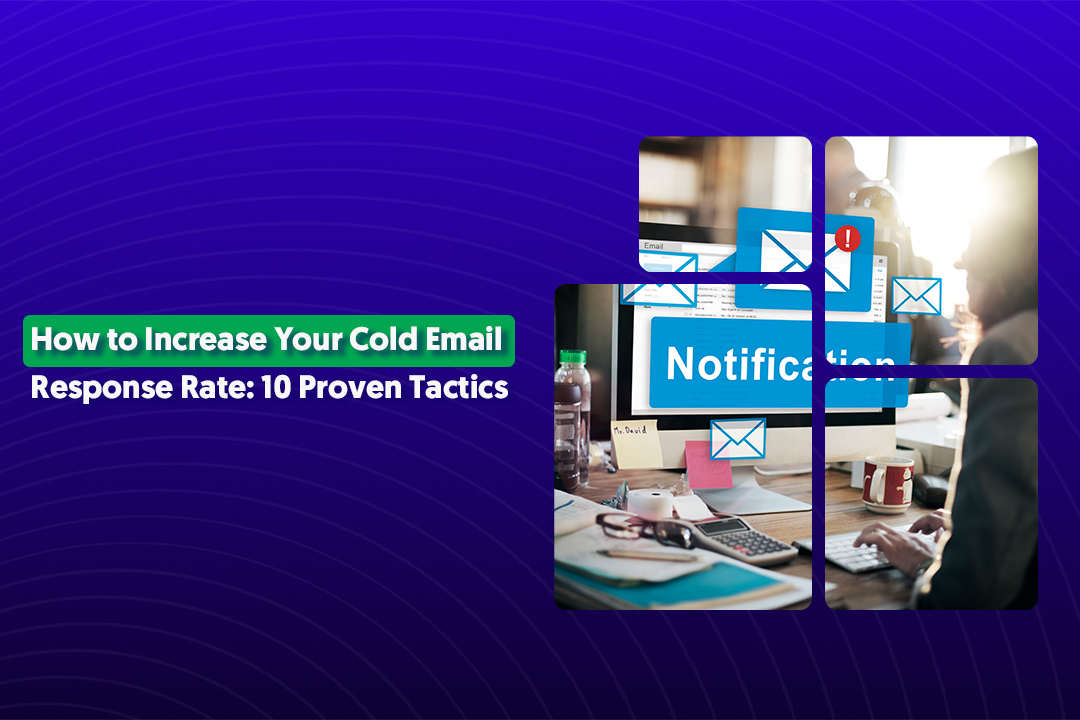Table of Content
Key Takeaways
- Keep your introduction email to a new client under 100 words—shorter emails get more replies.
- Personalize the first line with something specific about them or their company.
- Lead with their problem or opportunity, not your product features.
- Use a simple, low-friction CTA like "Worth a quick call?" instead of formal meeting requests.
- Follow up 4-6 times over 2-3 weeks—most responses come after the second or third email.
- Avoid attachments, multiple CTAs, and salesy language in your first outreach.
- Test different cold email templates for new clients and track what actually gets responses
Staring at a blank email draft trying to figure out how to approach new clients is brutal. You know exactly what you want to say in your head, but the second your fingers hit the keyboard, it all falls apart.
We've been there. That's why we put together this collection of sample emails to approach new client scenarios that actually work.
Whether you're doing cold outreach, following up after a referral, or reconnecting with a prospect who went silent, we've got you covered.
These aren't theoretical examples—they're based on what we've seen generate millions in pipeline revenue across thousands of campaigns.
Let's dive into the templates that'll help you start more conversations and book more meetings.
What's an Introduction Email to Approach New Clients Online?
An introduction email to a new client is exactly what it sounds like—your first message to someone who doesn't know you yet.
The goal isn't to close a deal or pitch your entire service. It's simply to start a conversation.
Think of it as walking up to someone at a conference. You wouldn't immediately launch into a sales presentation, right? Same logic applies here.
A good intro email should be:
- Short – Keep it under 150 words. People are busy and scanning their inbox fast
- Relevant – Show you've done your homework about them or their company
- Personalized – No "Dear Sir/Madam" generic nonsense
- Value-driven – Lead with what's in it for them, not what you need
The core flow is simple: introduce yourself → show why you're relevant to them → offer something valuable → ask for a tiny next step (like a quick call or reply).
That's it. If your intro email to new client does those four things well, you're already ahead of 90% of the outreach sitting in their inbox.
Anatomy of a Successful Email to Approach New Clients
Before we jump into the templates, let's break down what makes a sample email to approach new client actually work.
When you're figuring out how to approach new clients, these six elements are your foundation.
A personalized opening line
Start with something specific about them—a recent post, company news, or shared connection. This proves you're not blasting 10,000 people with the same message.
Even one personalized sentence makes a massive difference in response rates.

Check More Here: Best Cold Call Opening Lines to Nail the First 15 Seconds (With Examples)
A clear problem or opportunity
Show you understand a challenge they're likely facing or an opportunity they might be missing. Don't guess wildly—base it on their industry, role, or recent activity.
This is where relevance kicks in.
A simple value proposition
What can you help them achieve? Keep it to one clear benefit. "We help SaaS companies book 15+ qualified demos per month" beats "We offer comprehensive multi-channel lead generation solutions."
Social proof or context (optional)
A quick mention of similar clients or results adds credibility. Keep it brief—"We do this for companies like X and Y" works fine. Don't overdo it.
A low-friction CTA
Ask for something easy. "Worth a quick call?" beats "Let me know if you'd like to schedule a 45-minute discovery session to explore synergies." The smaller the ask, the higher your reply rate.
60–100 words total
Seriously. Cut everything that doesn't directly contribute to the goal. If your email is longer than a text message, it's probably too long. Respect their time and they'll respect your outreach.
13+ Sample Email Templates to Approach New Clients
Here are cold email templates for new clients that follow the exact principles we just covered. Each one is short, specific, and built for different scenarios you'll actually face.
1) The Quick Introduction Email (Short & Direct)
Subject: Quick question about [Company]'s [specific goal]
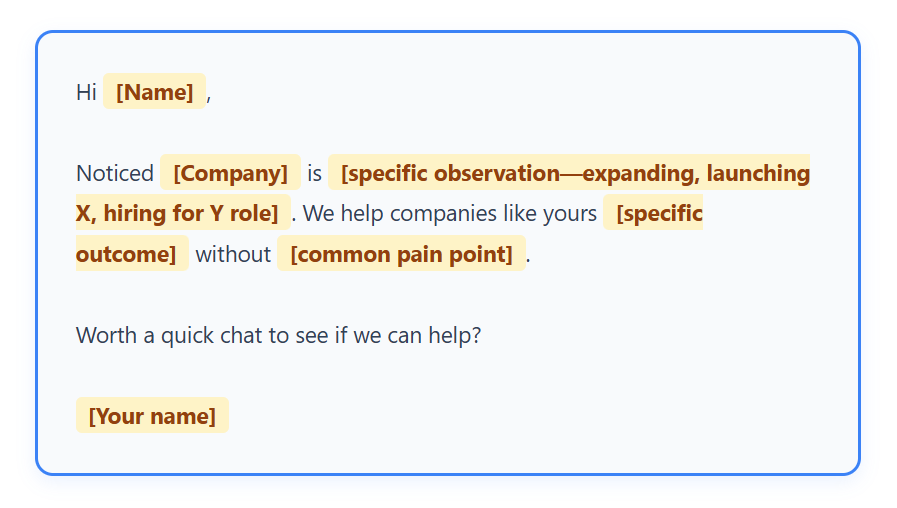
2) The Pain-Point Focused Outreach Email
Subject: Struggling with [specific problem]?

3) The "I Noticed Something About Your Company" Email
Subject: Saw [Company]'s [specific thing]

4) The Social Proof / Case-Study Email
Subject: How [Similar Company] got [specific result]

5) The Free Value / Resource Email (Audit, Tips, Checklist)
Subject: Free [audit/checklist] for [Company]
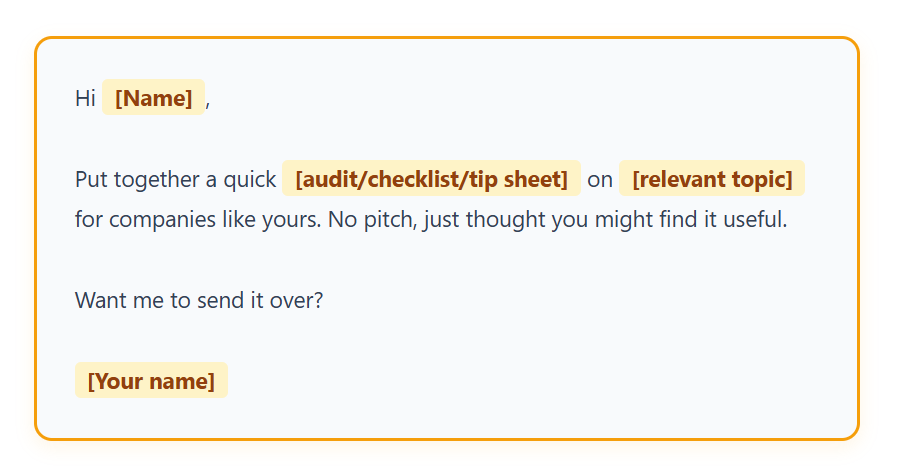
6) The LinkedIn-Based Email (Based on Post or Profile)
Subject: Your post about [topic]
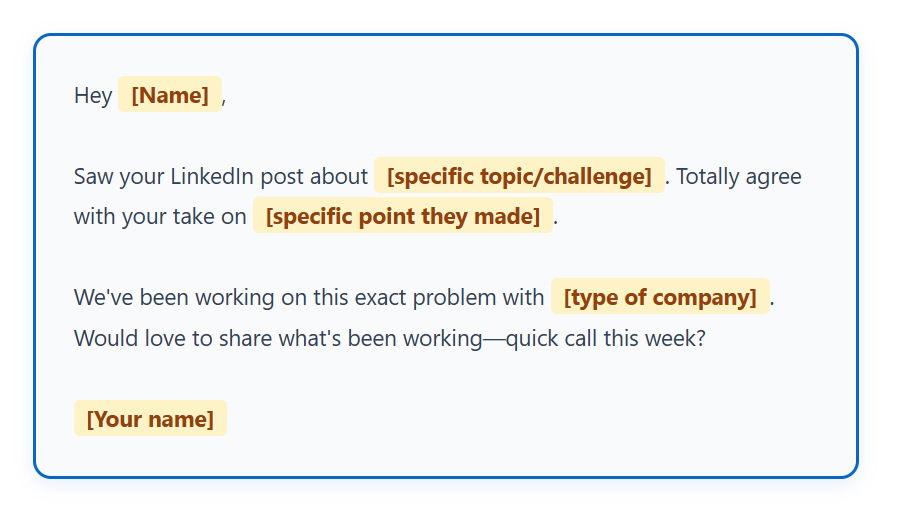
7) The "Saw You Hiring" Opportunity Email
Subject: Re: [Job title] role at [Company]

8) The Trigger Event Email (Funding, Launch, Expansion)
Subject: Congrats on [funding round/launch/expansion]

9) The Referral Introduction Email
Subject: [Mutual connection] suggested I reach out

10) The Meeting Request Email (Low Pressure)
Subject: 15 min to discuss [specific topic]?
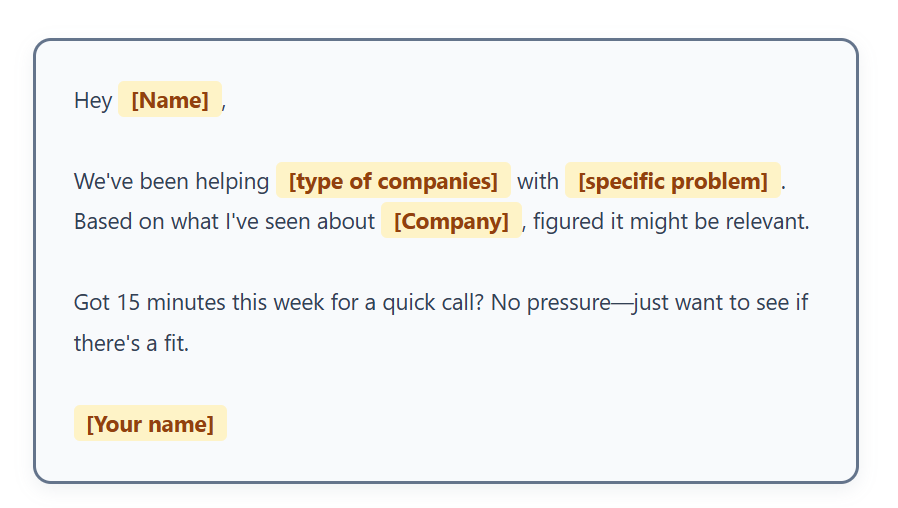
11) The Networking-Style Outreach Email
Subject: Connecting with other [industry/role] folks

12) The Re-Engagement Email for a Lost Client
Subject: Been a while
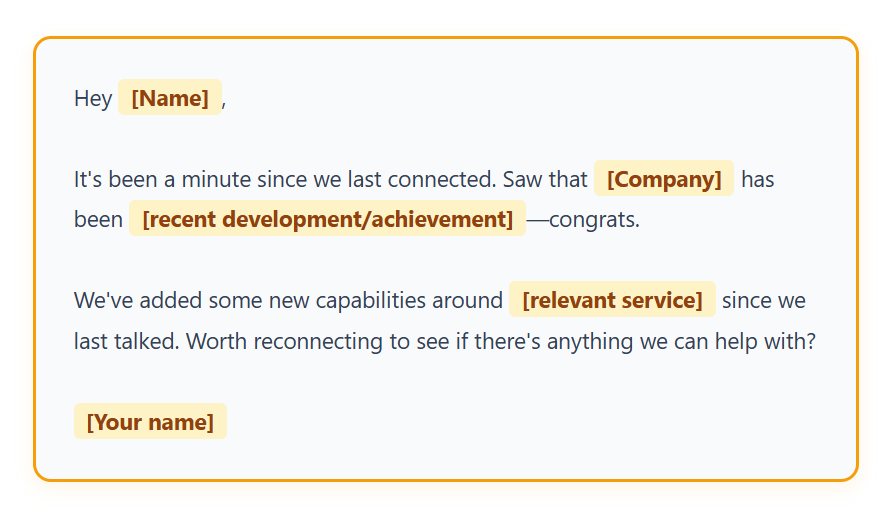
13) The Cold Email for Service Providers / Agencies
Subject: [Service] for [Company type] like yours
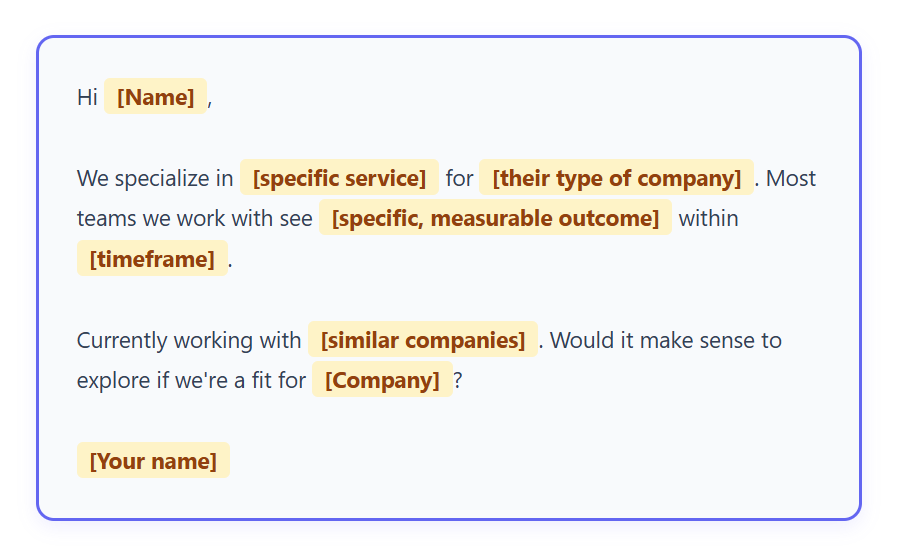
These cold email outreach templates give you a starting point for almost any situation. The key is customizing them with real details about the prospect—that's what turns a template into a conversation starter.
Best Practices to Write Emails That Get Client Responses
Having a cold email template for new clients is one thing. Actually getting replies is another. Here's what separates emails that get ignored from ones that start conversations.
✅ Hyper-personalization for line 1
Your first sentence needs to prove you did your homework. Reference something specific—a recent LinkedIn post, a company announcement, a mutual connection, or something unique about their business.
Generic openers like "I hope this email finds you well" get deleted instantly. Spend 60 seconds researching each prospect and your response rates will jump.
Also Check: High-Converting ChatGPT Prompts for Cold Emails
✅ Use relevance, not flattery
"I love what you're doing at [Company]" means nothing. Instead, show you understand their world: "Saw you're expanding into the UK market" or "Noticed you just launched a new product line."
Relevance builds credibility. Flattery just sounds fake.
✅ Avoid salesy intros
Don't lead with "My name is John and I'm the VP of Sales at..." Nobody cares yet. Jump straight into something relevant to them.
You can introduce yourself naturally in your signature or weave it into the value proposition.
✅ Keep CTA simple
"Worth a quick call?" beats "I'd love to schedule a 30-minute exploratory conversation to discuss potential synergies." The easier you make it to say yes, the more yeses you'll get. Ask for a reply, not a commitment.
✅ Test subject lines
Your subject line determines if the email even gets opened. Test different approaches—questions, observations, direct statements.
Keep them under 50 characters. Avoid spam triggers like "FREE" or excessive punctuation. When you find one that works, document it.

✅ Optimize deliverability
The best sample email to approach a new client is useless if it lands in spam. Email deliverability is equally important.
Use a proper sending infrastructure, warm up new domains gradually, avoid spam trigger words, and keep your email volume reasonable. If you're sending hundreds of emails from a brand new domain, you're getting filtered.
Check These Tools: Top Email Warm-Up Tools to Improve Deliverability
✅ Follow up 4–6 times
Most people won't reply to your first email. Not because they're not interested—they're just busy. We see the majority of responses come from follow-ups 2-4.
Space them out over 2-3 weeks. Each follow-up should add new value or a different angle, not just "checking in" or "bumping this up."
These practices turn a decent cold email outreach strategy into one that actually fills your calendar with meetings.

Common Mistakes to Avoid When Emailing New Clients
Even with a solid cold email template for new clients, these mistakes will tank your response rates. We've seen them kill thousands of campaigns.
❌ Pitching too early
Your first email shouldn't be a pitch. It's an introduction. Nobody wants a full product demo breakdown from someone they've never heard of. Lead with relevance and value, not features and pricing. Save the pitch for after they've agreed to a conversation.
❌ Long paragraphs
If your email looks like a wall of text on mobile, it's getting deleted. Keep sentences short. Break up paragraphs. Use white space. Aim for 3-4 short paragraphs max. Remember—you're competing with 100 other emails in their inbox.
Explore More: Cold Email Blueprint to Generate Leads (100% Tested)
❌ No personalization
"Dear Sir/Madam" or "Hi there" screams mass email. If you can't take 30 seconds to use their actual name and mention something specific about their company, why should they take 30 seconds to read your email? Generic emails get generic results—zero.
❌ Too many CTAs
Don't ask them to book a call AND check out your website AND download your case study. One email, one ask. Make it the easiest possible next step. Multiple CTAs create decision paralysis, and confused prospects don't reply.
❌ Sending attachments or links too soon
Attachments trigger spam filters and make people suspicious. Random links feel risky. Your first introduction email to new client should be text-only. Build trust first, share resources later. If they're interested, they'll ask.
❌ Not following up
Sending one email and giving up is leaving money on the table. People are busy. Your email got buried. They meant to reply but forgot. Following up isn't annoying—it's necessary. Most of our successful conversations start after follow-up 2 or 3.
Related: How to Write a Friendly Reminder Email That Gets Replies (100% Working Templates)
Avoid these mistakes and your cold email outreach will instantly perform better than most of what's hitting inboxes.
How Cleverly Helps You Approach New Clients With Done-for-You Cold Email Outreach
Look, writing great emails is one thing. Building lists, managing campaigns, handling follow-ups, optimizing deliverability, and actually booking meetings? That's a full-time job.
That's exactly why we built Cleverly.

We handle the entire cold email outreach process for you—from finding the right prospects to writing personalized emails to managing follow-up sequences. You just show up to the meetings.
Here's what makes us different:
We've run campaigns for over 10,000 clients including Amazon, Google, Uber, PayPal, Slack, and Spotify. Those campaigns have generated $312 million in pipeline revenue and $51.2 million in closed revenue.
But here's the best part—we only charge for results. Our pricing model is simple: pay per meeting-ready lead.
You only pay for qualified prospects who actually want to talk to you. No wasted budget on opens, clicks, or "engaged contacts" that go nowhere.

We write the emails. We find the prospects. We handle the follow-ups. We optimize for deliverability. We test and iterate until we're booking you consistent meetings every month.
If you're tired of doing cold email outreach yourself or your current approach isn't filling your calendar, let's talk.
🔥 Book a call with Cleverly →
We'll show you exactly how we'd approach your market and what kind of results to expect.

Conclusion
Getting a reply from a new prospect doesn't require magic—just a solid sample email to approach new client that's personalized, relevant, and easy to respond to.
Use the templates we've covered as your starting point, but don't just copy-paste. The real power comes from customizing them with specific details about each prospect. That's what turns a cold email into a conversation.
Remember the fundamentals: keep it short, lead with value, make the ask simple, and follow up consistently. Most people give up after one email. Don't be most people.
Whether you're handling cold email outreach yourself or working with a team like ours to do it for you, these principles work. They've generated hundreds of millions in pipeline across thousands of companies.
Now stop overthinking it and hit send. Your next client is waiting in their inbox.
Frequently Asked Questions



